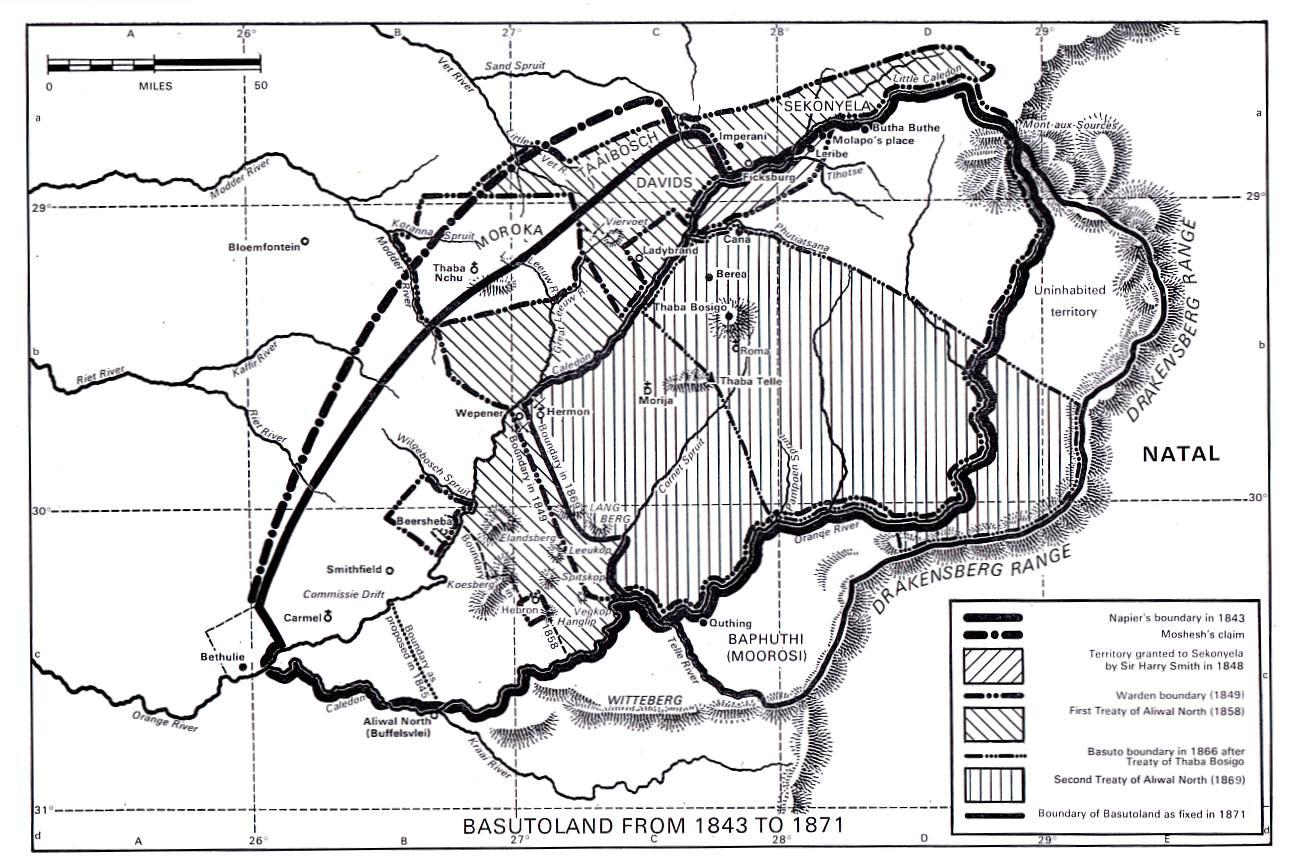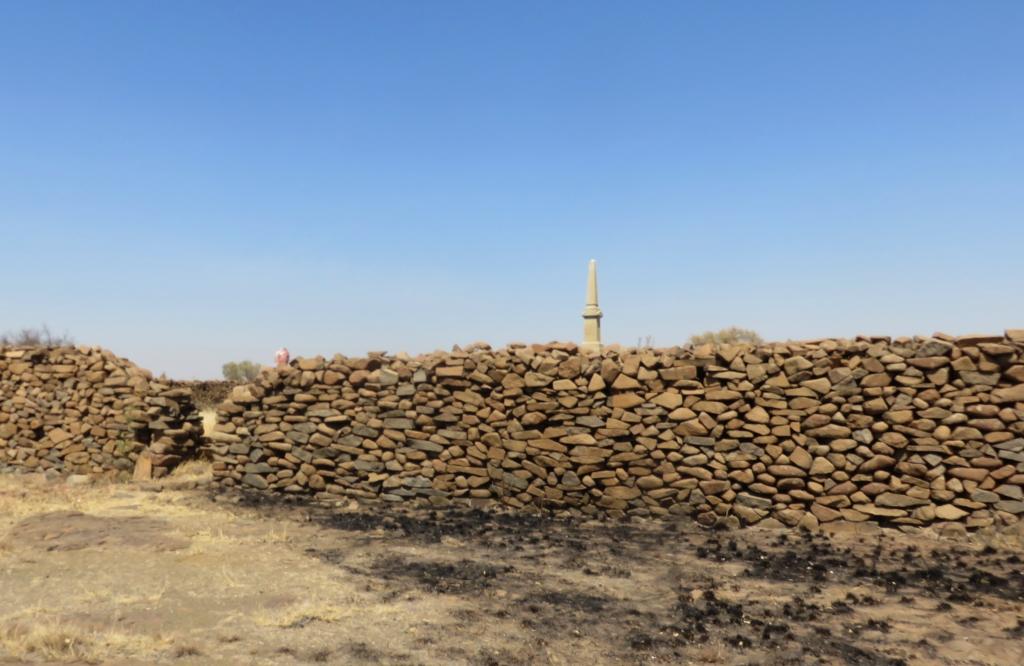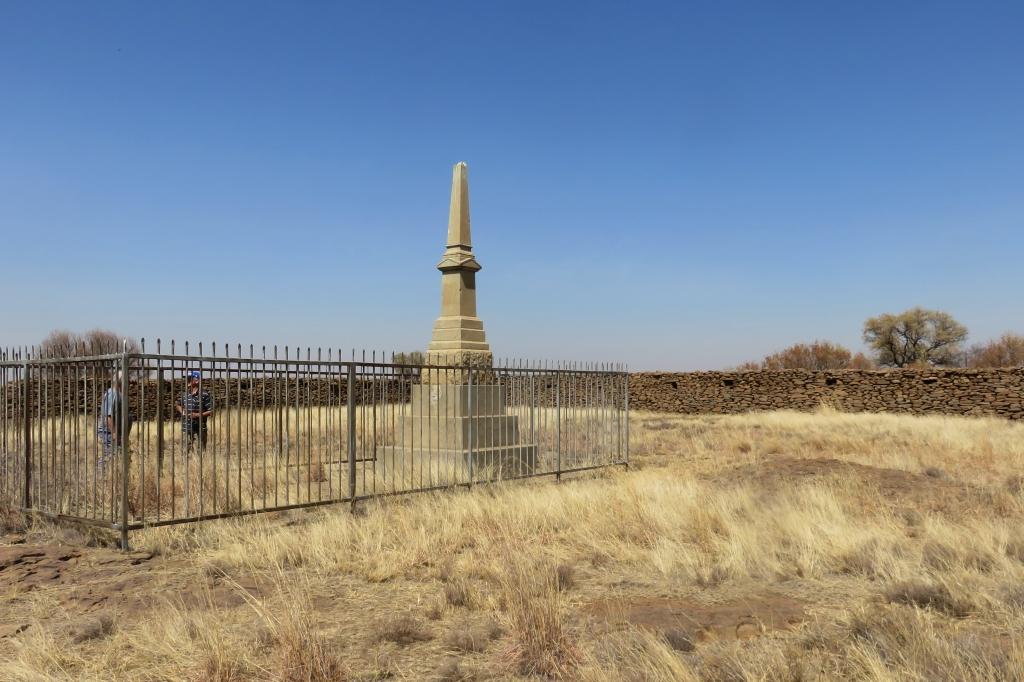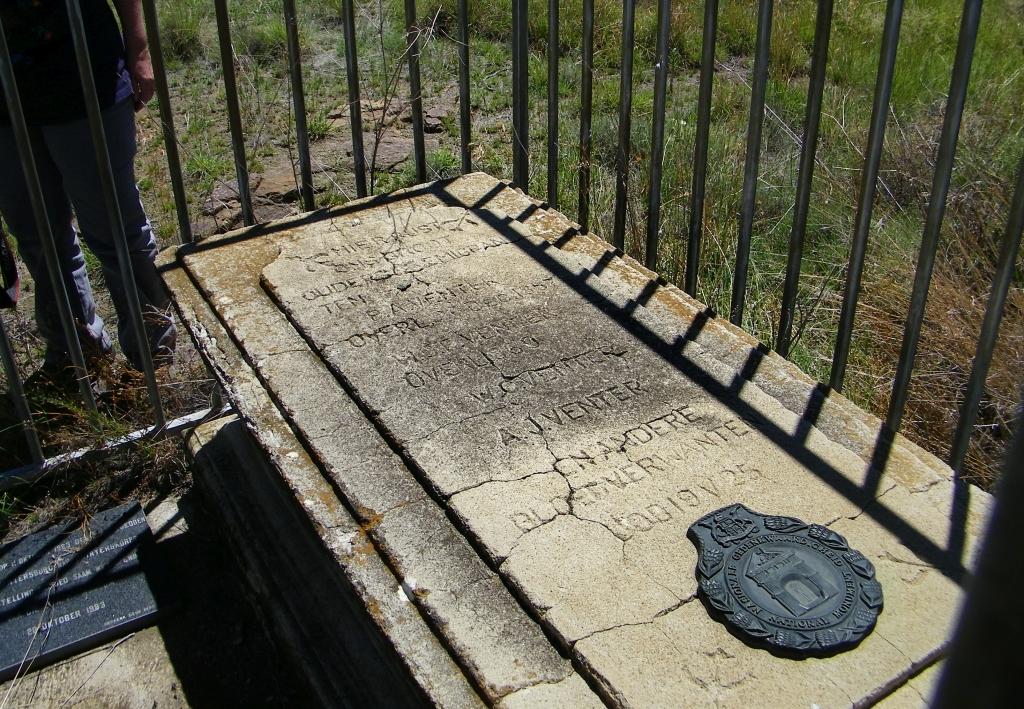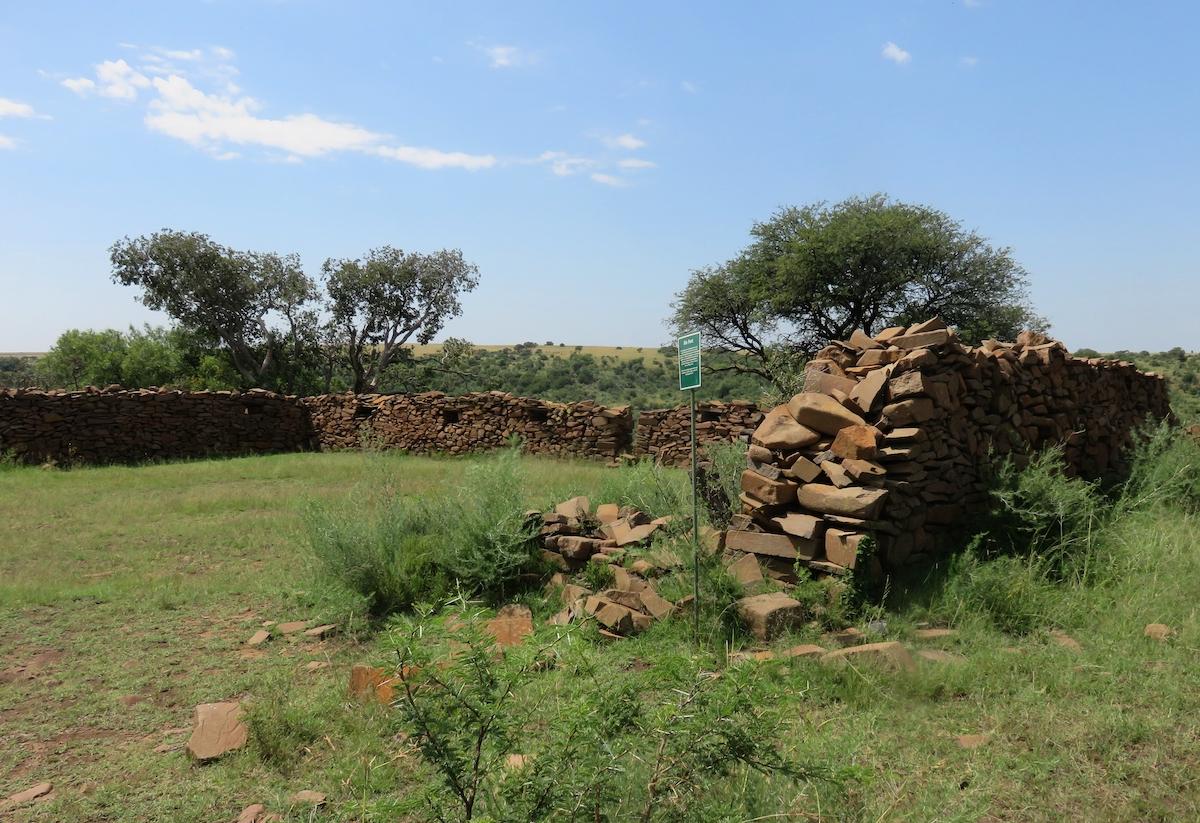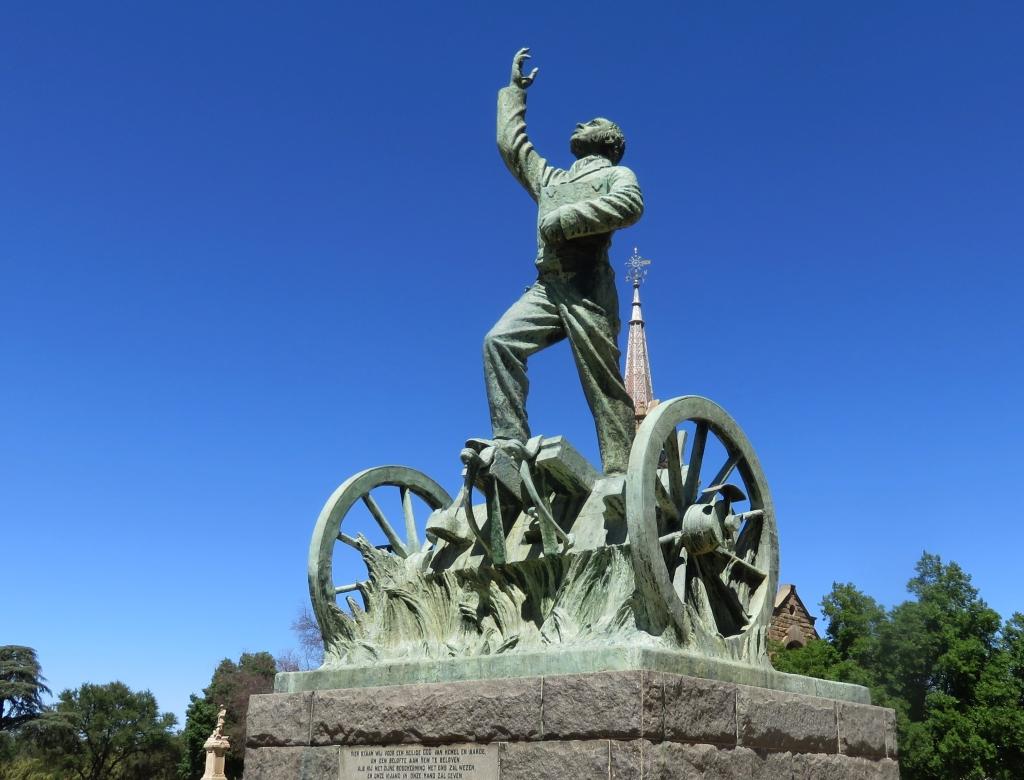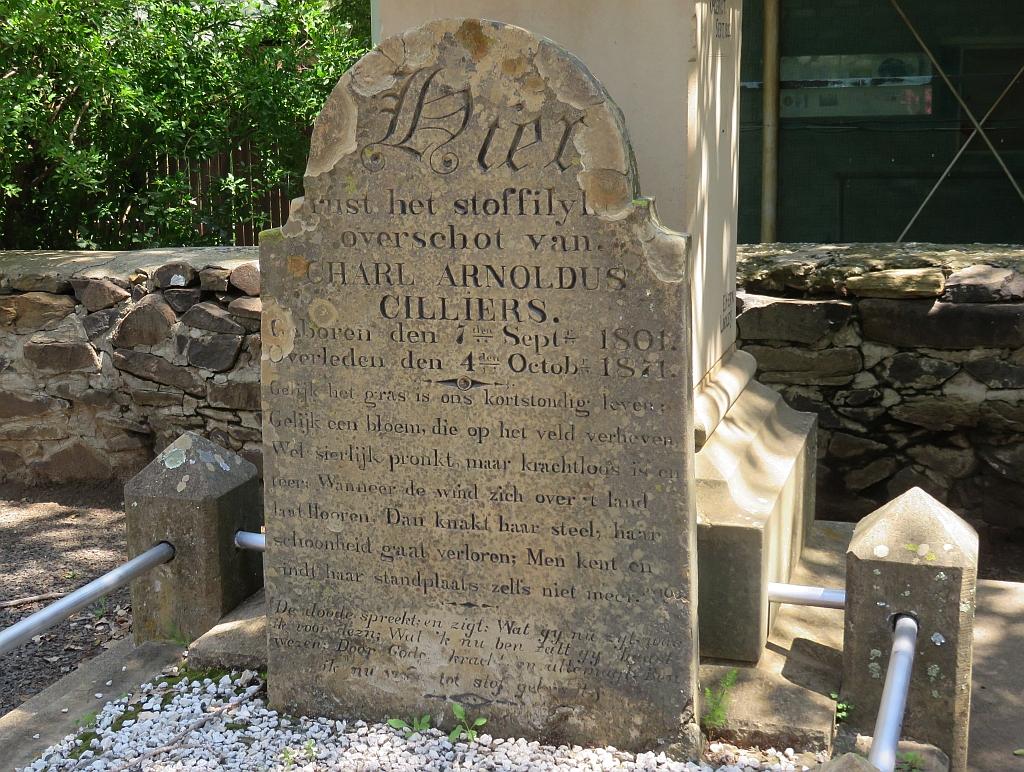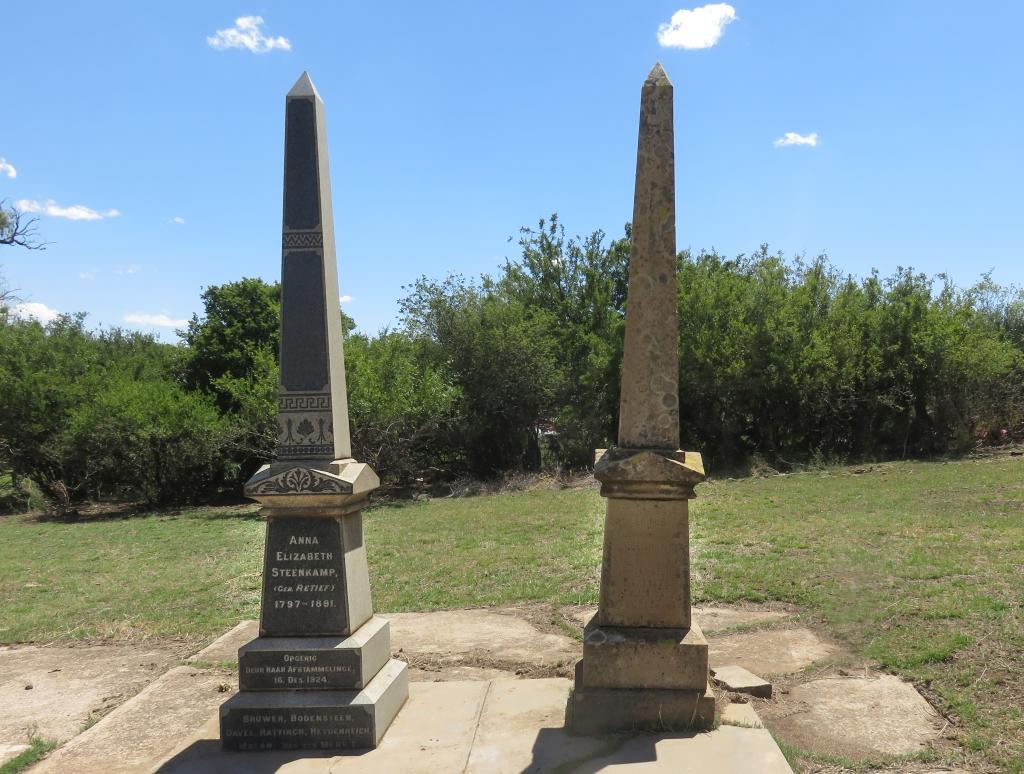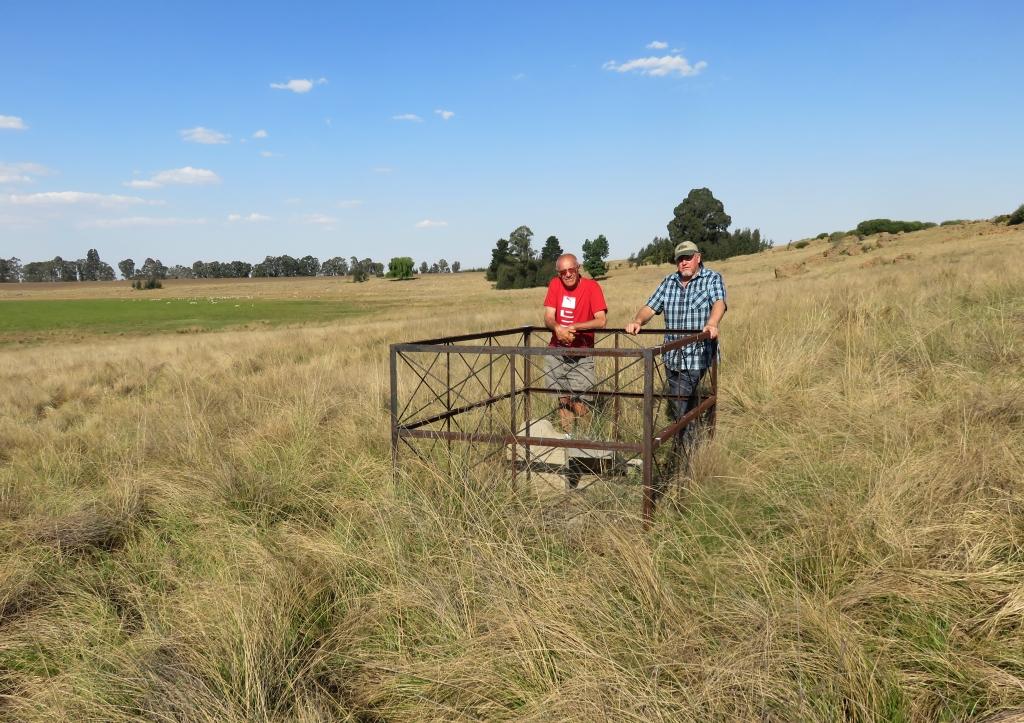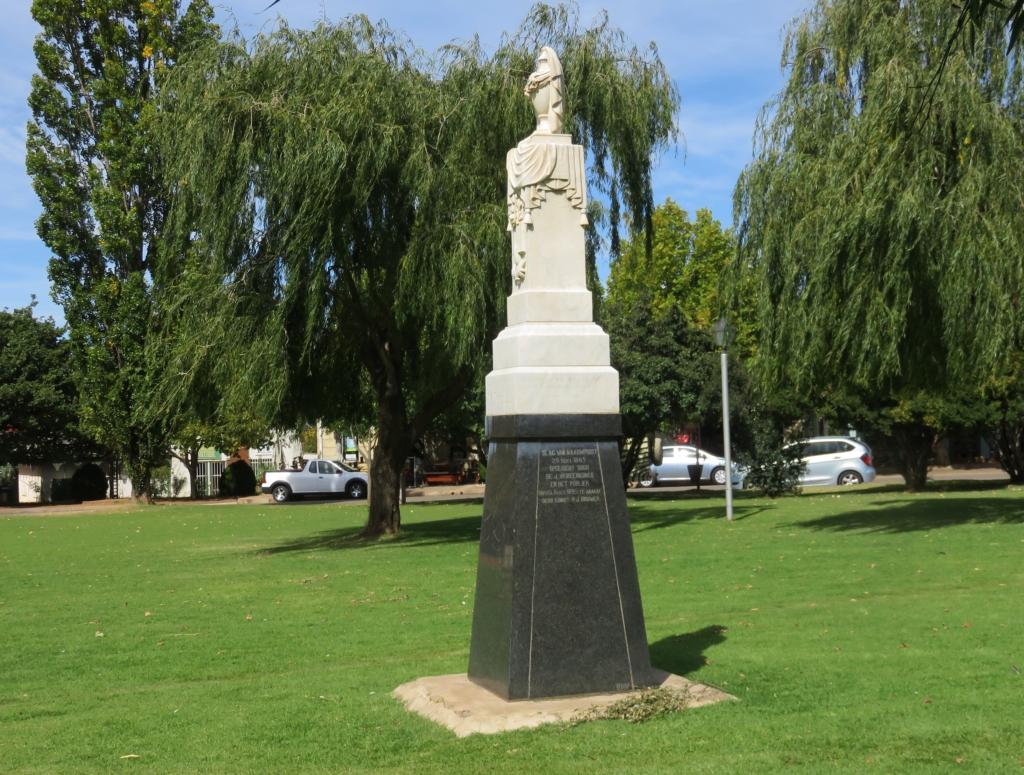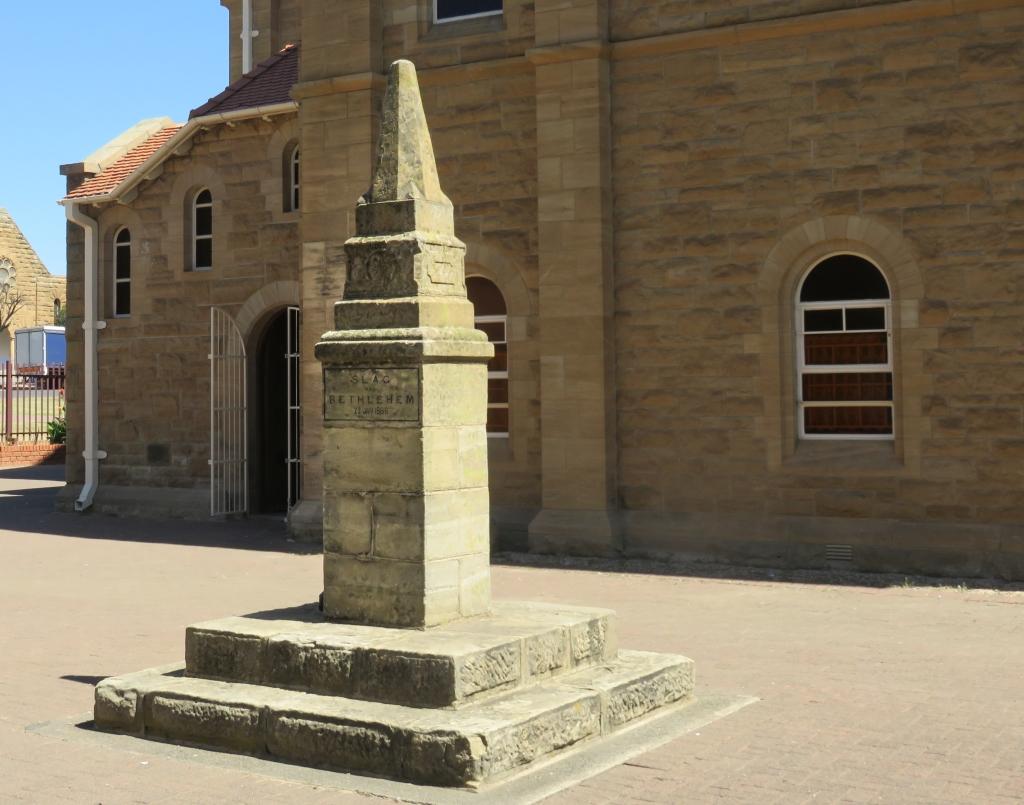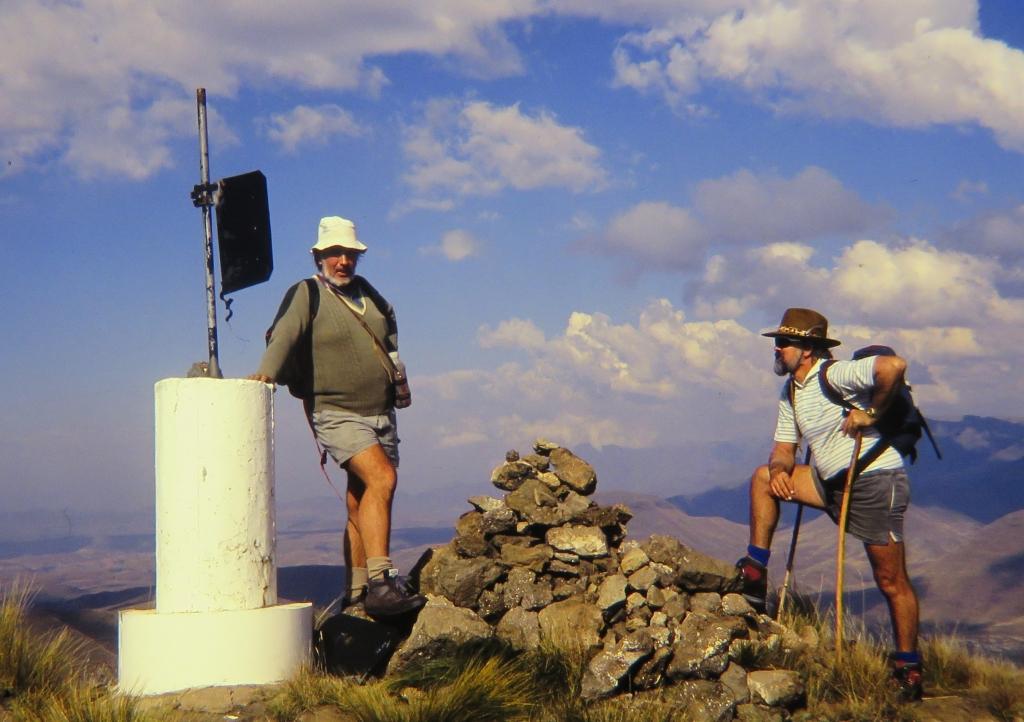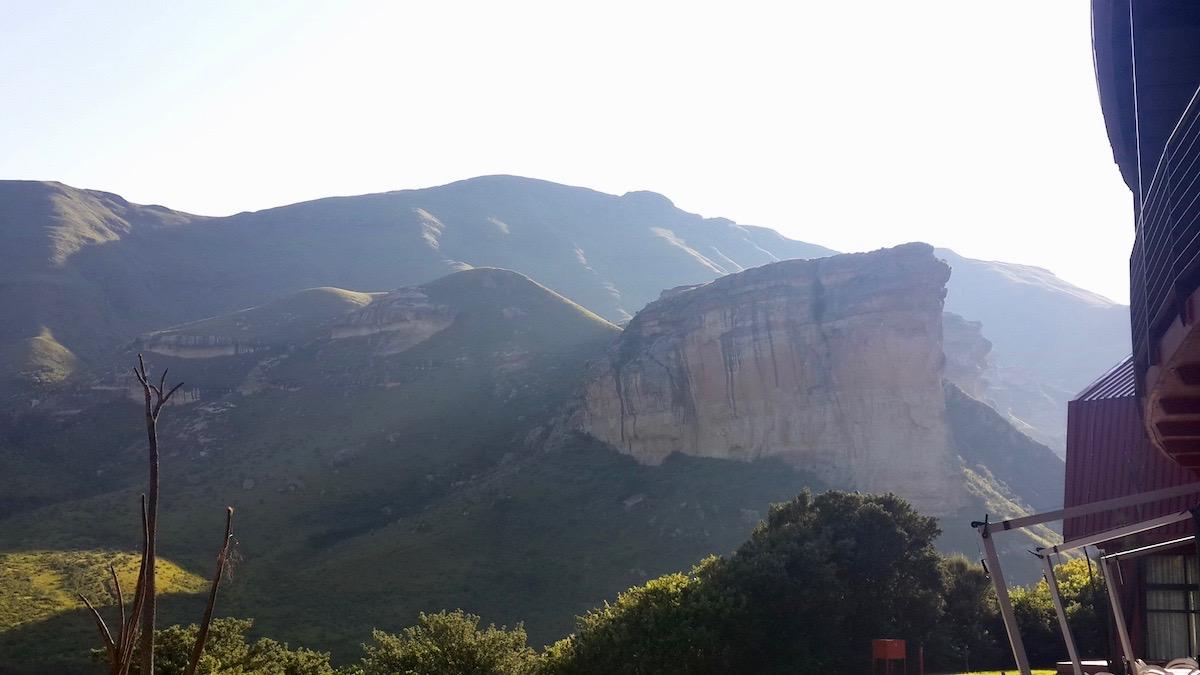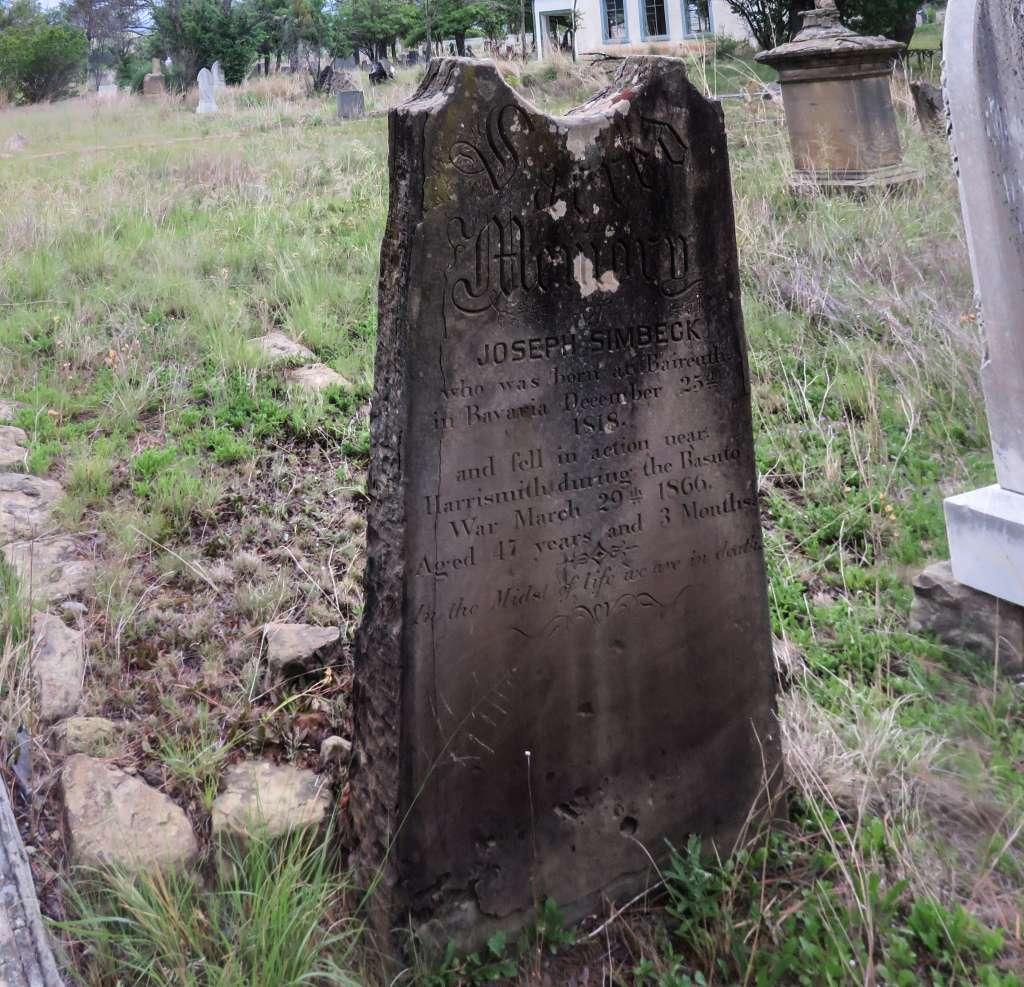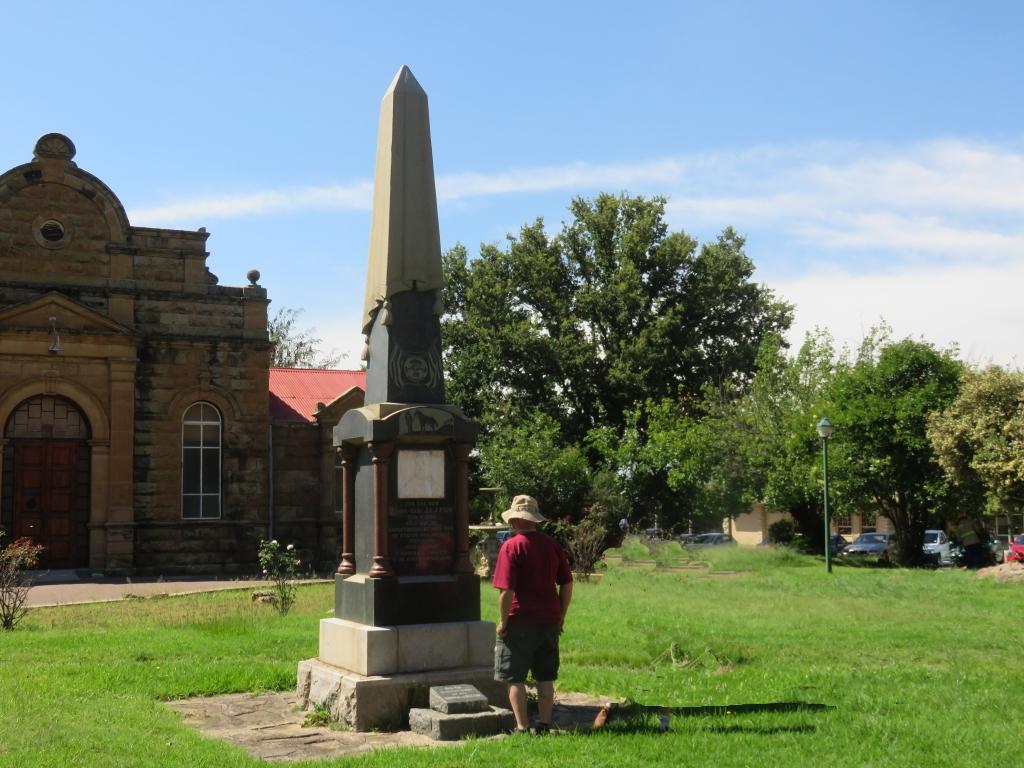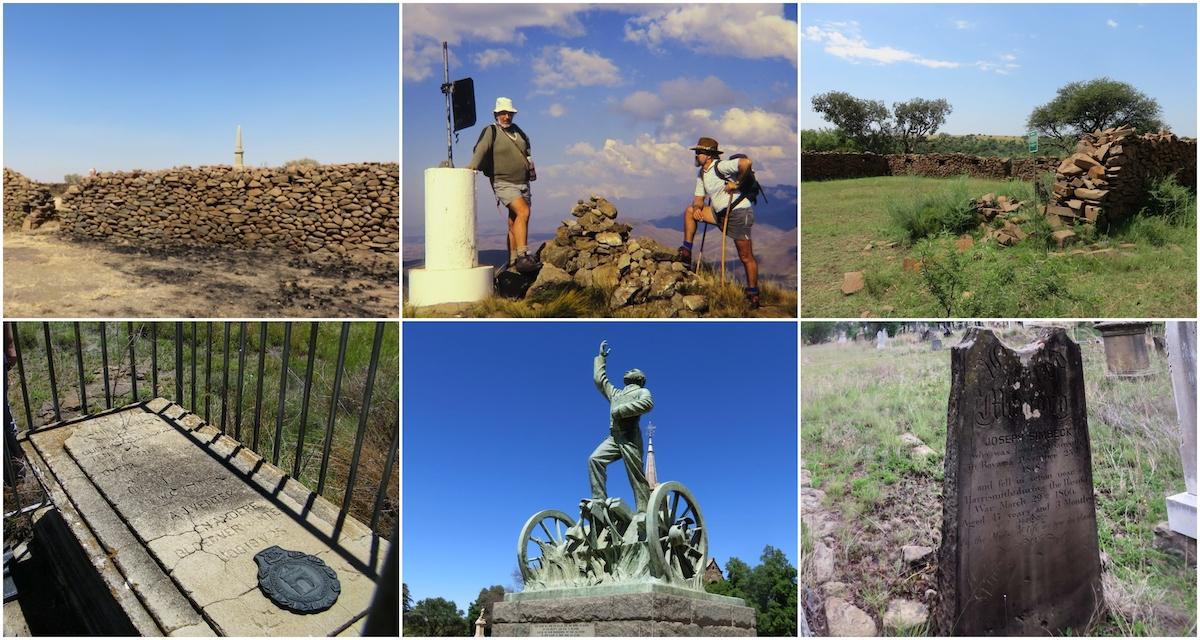
Disclaimer: Any views expressed by individuals and organisations are their own and do not in any way represent the views of The Heritage Portal. If you find any mistakes or historical inaccuracies, please contact the editor.
Three times in its history, the Free State went to war against the Basutos and their king, Moshoeshoe. That was 1858, 1865-66 and 1867-68. It was a turbulent time for both sides, which included the time in between the wars.
In this article I am reporting on some of the trekker monuments, graves and fortifications that still exist from that time. This is not a complete collection, it is just items I have come across in my travels.
First a summary of the historical events. Conflict between the Basutos and the trekkers started as the first trekboers crossed the Orange River to seek better pastures.
The confusing boundary situation between the Basutos and the Free State
Underlying the conflict was the confusing situation regarding the boundary between the Free State and the Basutos. The map above illustrates this. There was the Napier line, the Warden line, the various attempts in between to get some agreement and finally the present borders. When the first trekboers came over the Orange River they saw this as empty, uninhabited land, but the Basutos viewed it as the land of their ancestors. When the British took over the Free State in 1848, the Warden line was declared as the boundary between the Free State and the Basutos. Little heedance was given to this border by the Basutos under Moshoeshoe. Trouble continued with cattle theft, abduction and even murder happening in a wide area, as far as Winburg.
This led to war being declared by President Boshoff, when he called out the commandos on the 22 March 1858. The Free State was militarily weak at that time, too weak to bring about a decisive result. The war ended with British mediation and an agreement on borders.
This didn't end the conflict. Moshoeshoe did not withdraw his people to behind the border. After many attempts of talking peace, the 2nd Basuto war broke out on 9 June 1865. This time the Free State was in a much stronger military position and had many successes. In 1866 peace was made once again with the Basutos losing significant territory. In fact the borders were roughly defined as the borders of the present day Lesotho.
Again Moshoeshoe kept on, not wanting to accept these borders and thus the 3rd Basuto War started in Aug 1867 and lasted to March 1868. It was ended when Britain declared the protectorate of Basutoland. The Basutos came under British protection and were thus off limits to the Free State. The border question was again negotiated and a treaty signed at Aliwal North. It defined the borders as they stand today.
The Fort at Ventersburg
On the western side of the town of Ventersburg is a stone structure of an area enclosed by four walls. This is the fort at Ventersburg, which was erected for defence against a Basuto invasion back in 1856.
The Fort at Ventersburg (Horst Müller)
The Fort is a four walled defensive structure which was designed to keep people and animals protected in case of an attack. The story is inscribed on the monument, translated it says (the semicolons define a line break):
In memory of; our forefathers; at the request from; President Boshoff in 1856; defensive forts should be built at central locations; in case of war with the Basutos; the fort was used in 1866; and in 1858; the fort also served for defence in 1866 to 1868; against Mpandi and against the Basutos.
Inside the Ventersburg Fort (Horst Müller)
The construction is a dry-wall forming a square of about 42 by 42m, enclosing an area of 1700m2. It is about 2.5m heigh and around 0.7m wide at the bottom. Holes near the top are provided to shoot through, a gate on one end was to allow the wagons in. It was an amazing construction at the time, considering the tools and the manpower available.
Some quick estimates showed that the total mass of the wall is about 1000 tons, and this had to be carted here by ox-wagon. The carrying capacity of an ox-wagon is about 2 tons, thus 500 trips had to be made.
Just outside the wall is the grave of PA Venter, the leader of the building programme. The grave stone reads:
Hier Rust; Ons Groot; Ouders Emigraten; P.A.Venter; Overl. 26 Dec 1857; W.O.F.Venter Overl. 1860; W.C.Venter; A.J.Venter; En Andere; Bloed Verwanten; OD 19 V 25
The last line most likely refers to the date the monument was erected, 19 May 1926. Thus not only is PA Venter buried here, but also other family members.
Gravestone of the Venters (Horst Müller)
The Fort at Doornkloof
This was Sarel Cillier's farm near Lindley. The picture below shows the fort built by Cilliers to defend against the Basutos. The information board states that construction was around 1855, but in Ref 3 it says 1862/63. It has only three walls, the back towards the high flat area was left open. The idea was that the enemy would attack coming up from the kloof and face the walls. The open side of the fort would be protected by pulling in and securing some wagons.
Doornkloof Fort (Horst Müller)
At the time when it could have been used, the attack came so quick and unexpected that there was not time to take up position. The attack, I am talking about, happened on the 22 June 1865. Sarel Cilliers estimated that about 900 to 1000 Basutos attacked the farm. In a letter to his sisters in the Boland he describes what happened, I have translated this part of the letter:
We are in a horrible situation, which came about because of a mighty enemy. My wife and I were with my son Sarel when the Basuto attacked with a large force on the 22nd of June. It lasted from 9:30 in the morning until after midday, we were in a fight for over 2 hours. I also used my gun, in total we were 7 fighting men our wives had to cast bullets for us. With us we had H. Prinslo and two Mosterds with their wives who also happened to be with Sarel. Prinslo lost some of his sheep, Dirk managed to retain the sheep and some dairy calves the rest were driven away by the Basutos. I would estimate that it was 900 to 1000 Basutos that encircled us, but they kept their distance so that they were out of reach of our weapons. Thank the Lord not one of us came to any harm, on the side of the Basuto we killed two and two were badly wounded, two of their horses died, we managed to capture three of the horses.
At another place, 5 hours by horse from here, it was even worse. Nine Christians have been murdered, one son of brother Jan Andries, he wanted to recapture his cattle, had fired off all his shots and was murdered. Also murdered was old Thomas Steenkamp, who was 72 years old. He was with his sheep and received seven stab wounds, he died the same evening. Also killed was Kowes Luttig and one of his sons, a son of H. Nuwenhuys, one son of C. Liebenberg, one son of H.Hatting, one son of J.Hijmans and one son of J. Beukes.
The wagon of J. Beukes with a cart tied to it was taken away, he claims that he had £220 in money on the wagon which is now lost. There are 54 wagons without oxen. That way the people are ruined. I retained 200 sheep, 2 horses and 10 dairy calves. There are also houses burned, I know of 9 farms where this has happened. There are many people who have nothing to eat.
There were also attacks in Smithfield, 12 men have fallen and in Bloemfontein there was one attack. But there the Basutos lost 120 men, on our side only one horse was killed. You can see what our condition is and I would like all of us who are afraid of the Lord to pray for us and to ask the great God to show mercy and not to allow us to be destroyed by our enemy or to succumb to starvation. We surely deserve this for our sins.
I am now with my family in Kroonstad. We expect help to come from over the Vaal, 60 men have already arrived and, I think, on our side, we already have 2000 men in the commando camps. We hear that there has been another attack, two house helpers (I am not sure about this, the word is huijshouwe) have been murdered, at G.Beukes and Kowes.
Note from the translator: I cannot claim this to be a 100% accurate translation. I had lots of difficulties with it. Some of the words I could not find in any dictionary, even when I changed the spelling to modern Dutch. A problem could also have come from his handwritten letters when transcribed into type. And then there is the problem of absolutely no punctuation marks, no beginning or end of a sentence. One has to remember he had no formal schooling, his writing skills were all self-taught.
Statue of Sarel Cilliers in Kroonstad (Horst Müller)
Grave of Sarel Cilliers (Horst Müller)
In the letter above, the author mentions Thomas Steenkamp as one of the victims. His grave is on the farm Groenvlei about 14km east of Lindley. The text on the grave stone reads, translated: here rests Thomas Ign Jac Steenkamp born 29 May 1791, murdered by the Basutos 22 July 1865 at Groenvlei. The gravestone to the left is that of his wife, Anna Elizabeth Steenkamp (born Retief) 1797-1891. She, by the way, was a Bloukrans survivor.
Steenkamp Gravestone (Horst Müller)
Susanna van Rensburg Grave
On the farm Goede Hoop about 14km north from Petrus Steyn is the grave of Susanna Catharina J v Rensburg; geb 1853; vermoor deur Basutos 1865. Another stone, installed later, reads: hierdie klip is aangebring deur susterkind; J.O.C.Joubert; 16-10-1980. Translated: Susanna Catharina J v Rensburg; born 1853; murdered by Basutos 1865; this stone was set by the daughter of a sister on the 16-10-1980.
Grave of Susanna J v Rensburg (Horst Müller)
There is a story that she was not the only one killed, her younger brother suffered the same fate some distance away from this place. No exact date is given, just the year 1865. It stands to reason that this could have been the same attack as the one described by Sarel Cilliers.
Battle of Naaupoort
There is a monument to the Basuto War in the central square, that is President Square, of Clarens. The inscription reads: Slag van Naauwpoort; 29 Sept 1865; opgericht door; de J.Vereenigings; en het publiek; onthul 16 Des.1895 te Ararat; deur Komdt. H.J.Bruwer and on the opposing side: heronthul 9 Nov.1962; deur staatspresident; C.R.Swart; tydens Clarens; se goue jubelium; in dankbare nageslag; bring hulde.
Translated into English: Battle of Naaupoort, 29 September 1865; erected by the J.Society; and the public; unveiled 16 December 1895 at Ararat; by Kommandant HJ Bruwer and on the other side: re-unveiled on 9 November 1962; by state president C.R.Swart; during the golden jubilee of Clarens; praise by the thankful dependants. There are some names listed: Michel Horn, Jan Minnaar, Edzard Roussaw, Pieter de Beer and Gert Broodryk. These are the people from the commando who died during the battle.
Basuto War Monument in Clarens (Horst Müller)
In the 2nd Basuto War the Transvaalers came to the assistance of the Free State. Here it was a commando of about 300 burghers under the commandant Paul Kruger (the future president of the Transvaal Republic) which was moving from Harrismith to clear the area of the Basutos. The commando felt very much at ease when they set up camp for the night at Naauwpoort. No defensive precautions were taken, it turned out to be a mistake. In the early hours of the morning, it was still dark, the laager was attacked by the Basuto. Five burghers were killed and 10 wounded. Two days later burghers from the surrounding areas arrived to help drive the Basutos down the hill.
Naauwpoort is the gorge through which the road from the north, the R712, comes into town.
Another piece of information obtained from the monument is that it was initially erected at Ararat and was moved and modified to president square in 1962. The bottom, the dark part, would be the new addition.
The five burgers who died were buried at Ararat, checking the topographic map this is a place about 6 kilometres north from the poort. It coincides with where Noah's Cheese farm is situated today. One day I must go and check this out. Apparently three of the graves are still there, two were later exhumed to be re-burried on their farm in the Transvaal.
And this, by the way, is how Clarens got its name. It was to honour Paul Kruger who spent his last years in exile in Clarens on the shores of Lake Geneva in Switzerland.
The Battle of Bethlehem
At the Dutch Reformed Church in the centre of Bethlehem is a plain monument with only a few words inscribed: Slag van Bethlehem 1866. It is a monument to commemorate the Battle of Bethlehem, which took place between the Boers and the Basuto in 1866.
Monument to the Battle of Bethlehem (Horst Müller)
On Monday 22 January 1866 Commandant CJ de Villiers and 125 Burgers, as well as 150 Batlokwas, were passing through Bethlehem and were ready to depart when the post coach arrived. They were so glad to see the coach that they decided to stay another day, this decision proved to be the town’s saviour.
Between 3000 - 4000 Basutos attacked during the day. They invaded Bethlehem from several directions. The Boer Commando was able to quickly align and prevented the Basutos from surrounding the town. In the end 200 Basutos were killed and only two Boers sustained assegai (spear) wounds, there is no information about losses to the Batlokwas.
Wodehouse Border Marker
Strictly speaking not part of the wars but it is related... P.E. Wodehouse was called in to mediate again between the Free State and the Basutos to define the border. This he did in 1864 by reconfirming the Warden line, first set in 1849. To make sure the border is understood rocks were piled at some points. One such point was at the top of Wodehouse Kop (2438m) at the Golden Gate National Park. As discussed earlier, it did not lead to lasting peace.
Marker pile on top of Wodehouse Kop (Horst Müller)
Golden Gate (The Heritage Portal)
Dreyer and Simbeck Graves
In the cemetery of Harrismith are two gravestones of interest in connection with the Basuto Wars, that of HO Dreyer and of J Simbeck. The text on the stones reads (translated): To the memory of Henrik Oosterwald Dreyer, the 4th son of J.A.Dreyer of Constantia and grandson of T.F.Dreyer of Wynberg Cape colony at Constantia on the 4 October 1853 and died in the Basuto War on the 29 March 1866.
The second grave stone is in English and reads as follows: Sacred to the Memory of; Joseph Simbeck; who was born at Baireuth; in Bavaria December 25th; 1818; and fell in action near; Harrismith during the Basuto; war March 29th 1866; aged 47 years and 3 month; in the midst of life we are in death.
The background to this... HO Dreyer originated from Constantia in the Cape, as a young man of 19 he left the Cape to seek his fortunes at the new gold diggings in Australia, that was 1852. When he came back in 1859 he settled in Harrismith and soon owned the largest law firm in the town. He was elected as a member of the Volksraad (Parliament) in 1863 and became its chairman 1866.
As a Member of Parliament he was not required to join the commando to fight in the Basuto War. This didn't stop him from forming his own commando of non-citizens to help with securing the area around Harrismith.
He led a number of expeditions to the Hoek (Witsieshoek area) where he captured livestock. Helping him were a number of Batlokwas, who were living near Harrismith. There has been a long history of livestock theft from that area. His last expedition brought in about 1400 and was his most successful. But it also led to his demise. On the way back, the commando was attacked and he and Joseph Simbeck lost their lives, he suffered 14 stab wounds and Simbeck 7. Their bodies were taken back to Harrismith where they were interned with full military honours.
The grave of Joseph Simbeck (Horst Müller)
Commandant Fick Grave and Monument
There is a monument in honour of JIJ Fick at the Ficksburg Town Hall. The text on the plaque reads, translated, as follows (semicolons indicate line break): to the honour of; Kommandant-Generaal J.I.J.Fick; 1816 - 1892; hero of the Basuto War 1865 - 1868; and founder of the town; Ficksburg; erected by the appreciating public; in the year of the Voortrekkers; 1938.
Monument to JIJ Fick (Horst Müller)
After the monument was erected there was a request from the family of kommandant Fick to move his remains and that of his wife to be placed at the foot of the monument. That was done in 1939 as stated on a stone placed at the bottom of the monument.
Johan Izak Jacobus Fick was born in Uitenhage in 1816. At the young age of 16 he already took part in the Sixth Frontier War. In 1840 he joined the trek to Natal, and 1847 settled in the Free State, where he stayed for the remainder of his life. In 1865 he was elected Commandant-General of the Free State playing a dominant role in the 2nd Basuto War. He is the founder of Ficksburg.
About the author: Horst originated from Germany many years ago. He has spent a lifetime working for several major chemical companies. Throughout his life, he has had an interest in local history and has now, in retirement, made this his major hobby. He believes in not just doing the exploration and research but writing down his findings as well. Check out his website here. In addition to his website he has contributed a number of articles to the heritage portal, search under his name.
References
- Standard Encyclopedia of Southern Africa, Nasou Limited, 1974
- 'Doornkloof ons Erfenis', 1977, a booklet by an unspecified author about Doornkloof
- G.B.A.Gerdener, 'Sarel Cilliers - Die Vader van Dingaansdag', 1919
- J Nienaber, CJP le Roux, Vrystaat-Fokus, CUM Boeke, 1982
- CC Eloff, Oos-Vrystaatse Grensgordel, 1980, ISBN 086965 649X
Comments will load below. If for any reason none appear click here for some troubleshooting tips. If you would like to post a comment and need instructions click here.

